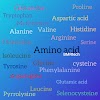Vitamin B1
Thiamine, also known as thiamin or vitamin B₁, is a vitamin found in food, and manufactured as a dietary supplement and medication. Food sources of thiamine include whole grains, legumes, and some meats.
History
In 1884, Takaki Kanehiro (1849–1920), a surgeon general in the Japanese navy, rejected the previous germ theory for beriberi and hypothesized that the disease was due to insufficiencies in the diet instead.
Structure of Vitamin B1-
Thiamine is an essential nutrient that all tissues of the body need to function properly. Thiamine was the first B vitamin that scientists discovered. This is why its name carries the number 1. Like the other B vitamins, thiamine is water-soluble and helps the body turn food into energy.
You can find it in:
foods
individual supplements
multivitamins
The body needs thiamine to make adenosine triphosphate (ATP). This is a molecule that transports energy within cells.
Benefits
Vitamin B1, or thiamin, helps prevent complications in the nervous system, brain, muscles, heart, stomach, and intestines. It is also involved in the flow of electrolytes into and out of muscle and nerve cells.
It helps prevent diseases such as beriberi, which involves disorders of the heart, nerves, and digestive system.
Uses in medicine
Patients who may receive thiamin to treat low levels of vitamin B1 include those with peripheral neuritis, which is an inflammation of the nerves outside the brain, or pellagra.







0 Comments